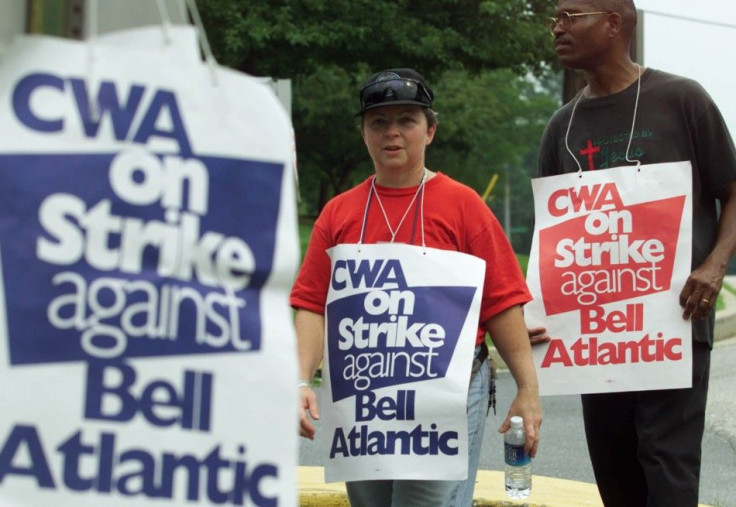Verizon Strike 2011: Eleven Years of Labor Peace Disappears

Verizon Communications Inc. (NYSE: VZ) had enjoyed labor peace for the past eleven years.
The last time Verizon workers went on strike was in August 2000, when members of the Communication Workers of America (CWA) held a work stoppage for eighteen days.
However, that strike occurred in a vastly different landscape for the telecommunications industry.
Just four years prior to the strike, Bell Atlantic merged with NYNEX (which was headed by Verizon’s current chairman, Ivan G. Seidenberg), retaining the Bell name.
Subsequently, in June 2000, Bell Atlantic merged with GTE, and that entity changed its name to Verizon Communications – at the time one of the biggest mergers in U.S. corporate history (valued at more than $52-billion)
In September 1999, Bell Atlantic and Britain’s Vodafone AirTouch Plc (now Vodafone Group Plc) had agreed to form a new wireless business which ultimately became the trademark “Verizon Wireless” division.
By August 2000, Verizon became the majority holder of Verizon Wireless, with a 55 percent stake.
Soon thereafter the unions representing Verizon workers, the Communication Workers of America (CWA) and International Brotherhood of Electrical Workers (IBEW) called a strike over issues related to the recent mergers, About 87,000 workers went on strike (almost double the current number striking).
The principal concern was the unionization of workers of the wireless division, as well as the loss of union jobs in other parts of the company (where workers would be hired at lower wages and benefits) and forced overtime.
“The last strike was very short,” said James Cox, managing partner of Harris Financial Group in Colonial Heights, Va.
“The major issues centered around job security, pension, and health care. The union and the company agreed that workers hired after a certain date would not enjoy the same job security as older workers.”
A union spokesperson at the time lamented: "When companies merge, sometimes they look to consolidate operations. That means people face the risk of facilities shutting down, or work being shifted hundreds of miles away, and that means shifting families.”
The union official added: "Verizon does have some non-union locations so that's a real fear for people. Our members have a real attachment to their jobs, to their communities, and they want some sense that they won't be shipped hundreds of miles from home.”
Interestingly, the 2000 strike action also included acts of vandalism (about 455 according to the company), as well as threats of violence and harassment against Verizon management. As the company alleges is happening now, in 2000, cables were cut by strikers, knocking out service for thousands of customers.
Verizon offered a $25,000 reward for information leading to prosecution of vandals (the current bounty is double that).
The strike ended in late August – employees received a three-year agreement which featured a 12 percent wage hike over three years (which were tied to productivity increases in productivity) and certain caps on forced overtime.
However, the settlement largely failed to address a number of issues, including longer hours, and job security. Reportedly, the unions were deeply divided over the resolution of the strike.
In addition, most wireless workers remain non-union after all these years.
Cox added: “The union provided great concessions to Verizon… and has regretted it ever since. The workforce received pension enhancements, work bonuses, and the continuation of the very important premium free healthcare.”
At the time of the 2000 strike, an article The Wall Street Journal declared that Verizon: “maintained the ability to relocate workers to cut costs or respond to changes in the increasingly competitive telecommunications industry. It also gained more flexibility in transferring workers, and gets to pick which installers handle its new DSL services.”
© Copyright IBTimes 2024. All rights reserved.




















